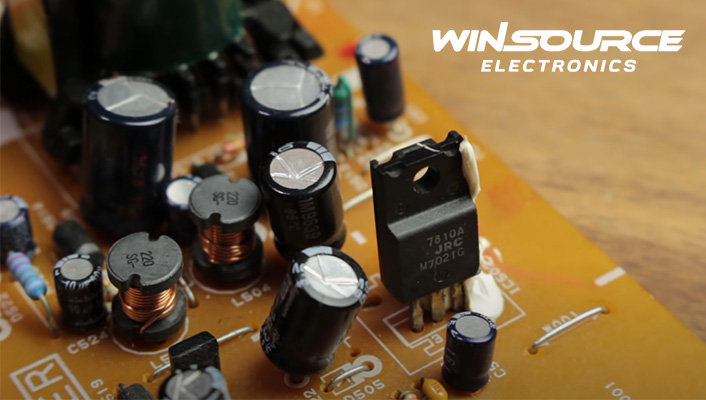
Electronics involves studying circuits that are important for many modern gadgets. One key part of these circuits is capacitors, which store and release electricity. Understanding how capacitors work alone and when combined in groups is vital.
It’s called a series when capacitors are put in a line, one after another. When they’re connected side by side, it’s called parallel. These different setups change how the circuit works.
To help with understanding capacitors in these setups, there’s the Series and Parallel Capacitor Calculator. This online tool makes it easy to figure out the combined strength of capacitors in a circuit. Users simply enter the individual strengths and how they’re arranged – series or parallel. The calculator quickly gives the combined strength and explains the math.
This calculator is more than just for learning. Engineers use it to make circuits work better, from chargers to music systems and machines. You can find such tools at an online electronic store
Table of Contents
ToggleSeries and Parallel Capacitor Calculator: Demystifying Circuit Analysis
Understanding the Basics of Capacitors in Series and Parallel
Often overlooked in their unassuming demeanor, capacitors hold intrinsic importance within the intricate tapestry of electronics. They quietly power our devices, enabling the seamless operation of countless gadgets we interact with daily. These unpretentious components are the unsung heroes behind the scenes, contributing to the functionality of everything from smartphones to air conditioning systems.
However, beneath their unassuming appearance lies a world of complexity that can be both daunting and intriguing. The concept of capacitors interconnected in series and parallel formations might appear at first glance like an enigmatic puzzle, challenging even the most adept minds to decipher its secrets. Yet, rest assured, this article is here to serve as a guiding light, illuminating the path to understanding these configurations.
Delving into Series Capacitor Configurations
In series configurations, capacitors stand shoulder to shoulder like a chain of electronic soldiers. They’re connected end-to-end, possibly leaving you pondering the magic they collectively conjure. Imagine this: when you string capacitors in series, their capacitance isn’t simply the sum of individual values. Instead, it’s akin to a delicate balancing act – each capacitor contributing to the overall capacitance while factoring in the inversely proportional relationship. It’s a captivating interplay of charges and voltages, subtly influencing the circuit’s behavior.
The components are like comrades, huddling together at both ends. Their arrangement might seem more superficial, but be aware of appearances. When capacitors are linked in parallel, their collective capacitance becomes the sum of individual capacitances. The voltage across each capacitor remains the same, fostering a sense of unity in the current division. This arrangement can significantly enhance the charge-holding capacity of the circuit, offering a practical application of the adage “strength in numbers.”
With these fundamental configurations in place, we venture into the heart of circuit analysis – equivalent capacitance. This enigmatic term refers to the hypothetical single capacitor that exhibits the same behavior as a complex arrangement of capacitors. It’s as if the circuit is playing an intriguing hide-and-seek game, disguising intricate structures with a single value. Determining the equivalent capacitance requires a touch of algebraic elegance involving inverse sums and parallel products.
Series and Parallel Capacitor Calculator: A Game Changer
The Series and Parallel Capacitor Calculator emerge as a beacon of convenience in circuit analysis. No longer must you grapple with pen, paper, and complex equations. This nifty tool simplifies the task by taking your input – the individual capacitance values and the configuration type – and promptly unveiling the equivalent capacitance. The calculator’s prowess lies in its rapid calculations and ability to guide you through the methodology, nurturing your understanding of circuit intricacies.
Peering into the Calculator’s Toolkit
Often overlooked in their unassuming demeanor, capacitors hold an intrinsic importance within the intricate tapestry of electronics. They quietly power our devices, enabling the seamless operation of countless gadgets we interact with daily. These unpretentious components are the unsung heroes behind the scenes, contributing to the functionality of everything from smartphones to air conditioning systems.
However, beneath their unassuming appearance lies a world of complexity that can be both daunting and intriguing. The concept of capacitors interconnected in series and parallel formations might appear at first glance like an enigmatic puzzle, challenging even the most adept minds to decipher its secrets.
Application in Real-World Scenarios
The magic of capacitors in series and parallel isn’t confined to theory – it transcends to real-world applications. Engineers wield this knowledge when designing power supply systems that demand stable voltage outputs. Audio enthusiasts tweak circuits to create harmonious soundscapes with effective filtering. Industries capitalize on the energy storage capacities of capacitors, employing them in myriad devices for smoother operations.
As technology hurtles forward, the significance of capacitors continues to grow. With electronic gadgets evolving daily and industries embracing automation, capacitors remain integral to shaping a connected world. The Series and Parallel Capacitor Calculator isn’t just a tool; it’s a testament to our ability to harness and wield knowledge for innovation.
Final words
This exploration has unveiled a world of intrigue and possibility, from the unassuming capacitors that power our devices to the complex interplay within circuits. The concept of equivalent capacitance, which conceals complex structures behind a single value, is no longer a mystical notion. It’s a tool that empowers us to simplify intricate arrangements, fostering a more profound comprehension of electronic landscapes.

COMMENTS